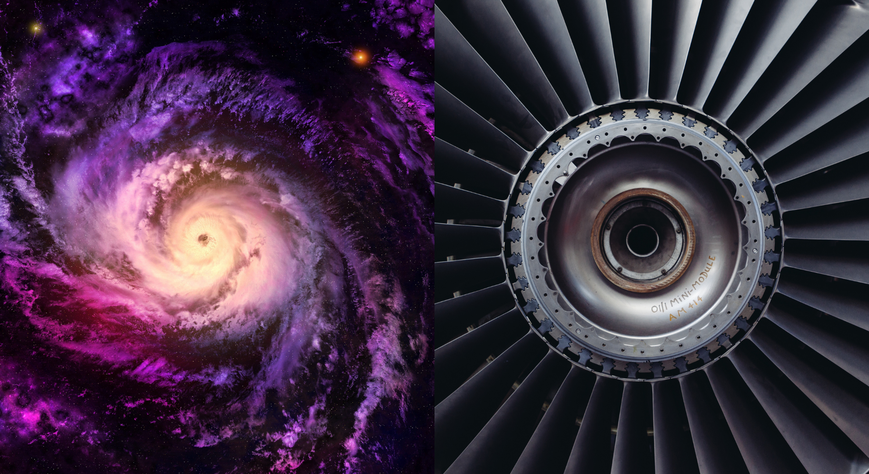Biomimicry. Design inspired by nature (I)
12 / 02 / 2020
Humans have often been inspired by nature and as a result have conceived and manufactured efficient, functional, profitable and sustainable products, most of them present in our everyday. This is what is known as biomimicry.
Now we will go over some of nature’s shapes and functions that have been most copied by industrial design throughout history and continue to be a source of inspiration.
The spiral form: Water and air move spontaneously according to a logarithmic or exponential spiral growth pattern. This formal pattern also appears in the movement of galaxies or waves, in the tail of chameleons or in our skin pores.
Many fans, turbines or propellers copy this structure achieving less friction of fluids and improving efficiency. Resulting energy savings can reach up to 80 %.
The double logarithmic spiral helps to better distribute space. The disk florets of the sunflower, like the floral elements of other plants, are arranged that way. An example of its application in architecture is the Gemasolar solar power plant in Seville (Spain), which places its mirrors following this spatial arrangement. This helps to produce more electricity by taking up less space.
The hexagone is the geometric figure that allows a more efficient occupation of space. Bees use it in their honeycombs and many construction structures used in aeronautics, architecture and interior design are also based on the hexagon due to their great resistance and lightness.
Aerodynamics: The shape of a green duck’s beak helps this bird to make great migratory movements, as it improves the aerodynamics of its body.
An example of how this shape found in nature can be used in design is the high speed train AVE S-102, whose design was inspired by the shape of the duck’s head and beak to reach greater speed.
Hydrodynamism: The skin of many shark species presents a tooth-shaped structure that increases hydrodynamism, reducing friction and turbulences. The fabric of competition swimsuits replicates the hydrophobic texture of shark skin, allowing swimmers to glide better in the water.







